Ft.Myers Beach
Sunday, November 6, 2011
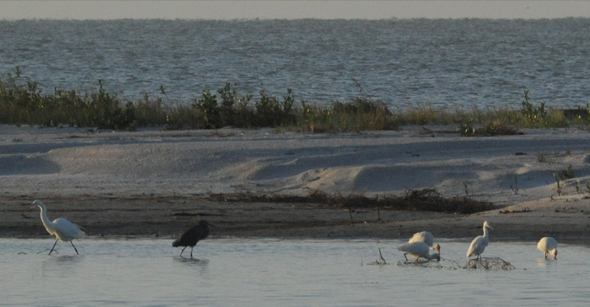 | Brenda and I got up early and walked across the highway and down a short path to the beach. It was a wonderful place to watch the sea birds. There was a sheltered tidal stream and a sand spit beyond it before the open bay. Such a tidal stream in Spanish can be an "estero", which is the name of this island. |
| A pair of pelicans cruise by. | 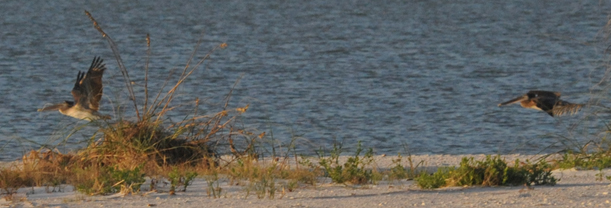 |
 | A gray heron takes flignt over the sand spit. |
| The sandpipers were in their element on the marshy shore. | 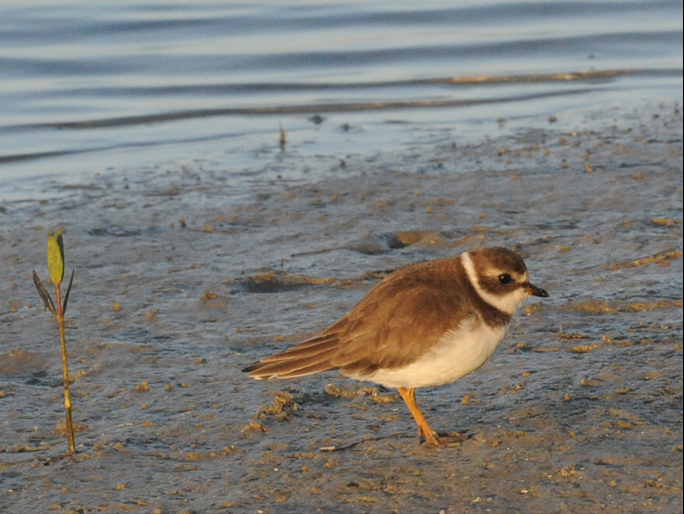 |
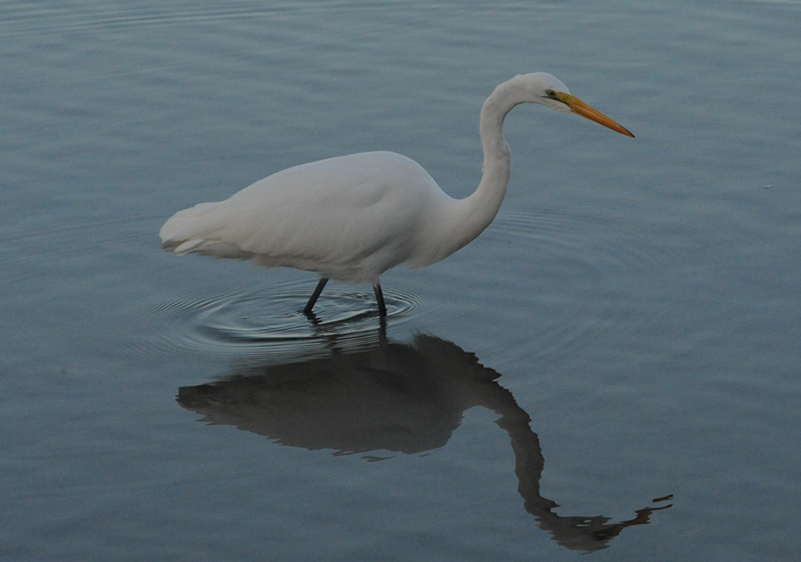
We reached a small wooden dock and Brenda, having preceded me, motioned for me to come on out. From the dock, this white heron was just about 10 ft away from me, and seemingly unalarmed by my presence. Ft. Myers Beach has the advantage of both a high population of birds and a high population of people, so they get used to each other's presence.
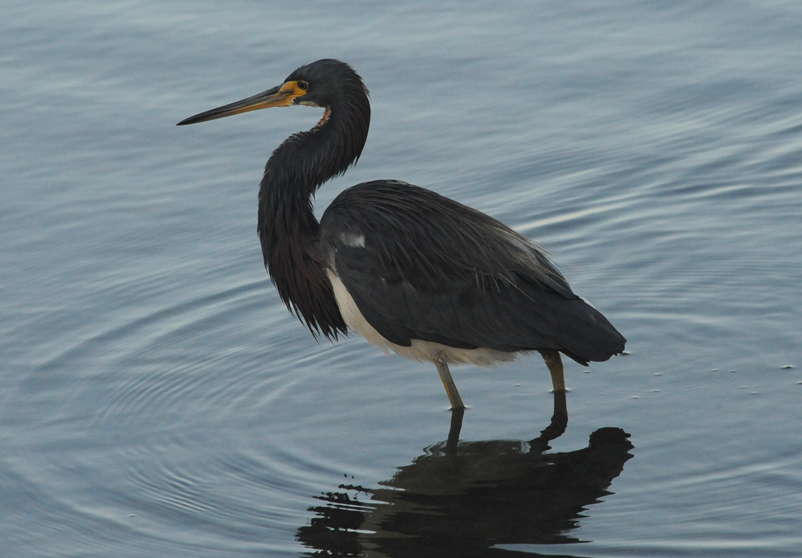
This heron was doing his early morning fishing is a broad, shallow area of the tidal stream.
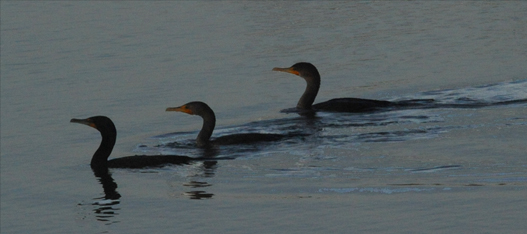 | Three cormorants come cruising smoothly across the waterway. Oops! Then there were two, as one of them dives for his breakfast.  |
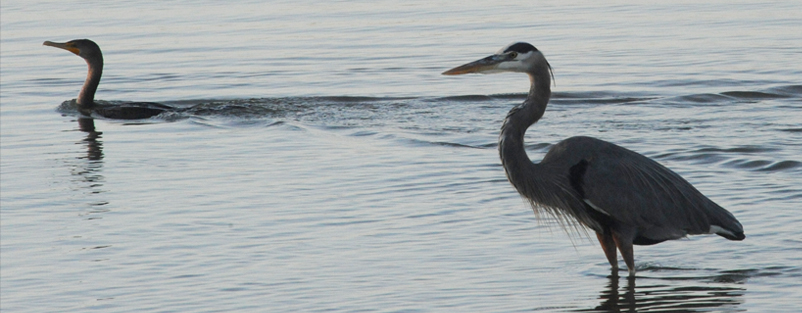
This cormorant zips past a waiting heron, leaving a wake like a speedboat. The heron probably takes a dim view of this since it interrupts his fishing.  Oh, well! One can always just lift off and go somewhere else to fish, away from these rowdy cormorants. The sedate and elegant herons had to put up with a lot of coming and going. Below an ibis and a pair of pelicans come in for a landing. |  |
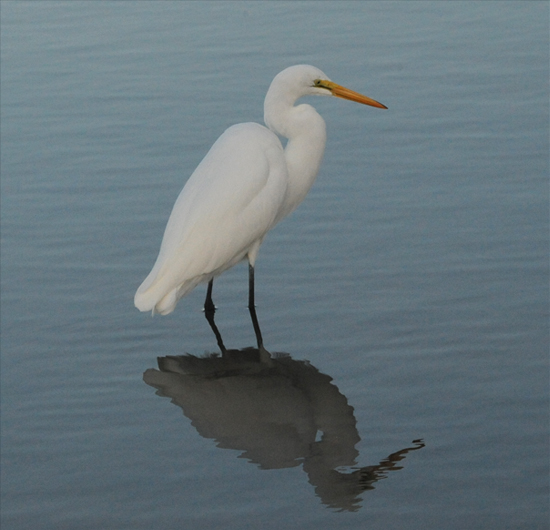 |  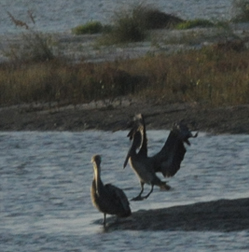 |
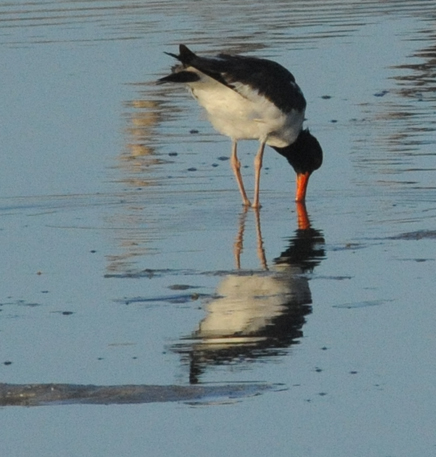 | 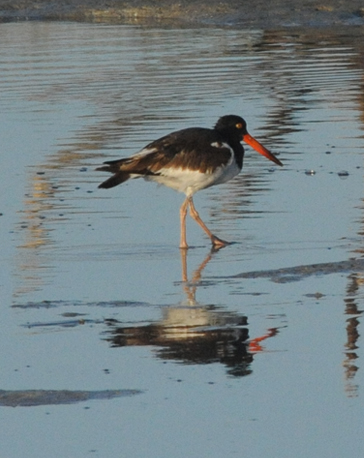 |
An oystercatcher plies his trade in the shallow water of the tidal flat.

 | This oystercatcher appeared to be taking a bath. He flopped and splashed and appeared to be enjoying himself, then climbed out of the water and shook himself vigorously. He stands there for some time, preening his feathers. He's all dressed up and has had his morning bath - he's ready to go. |
Oystercatcher coming in for a landing.  | 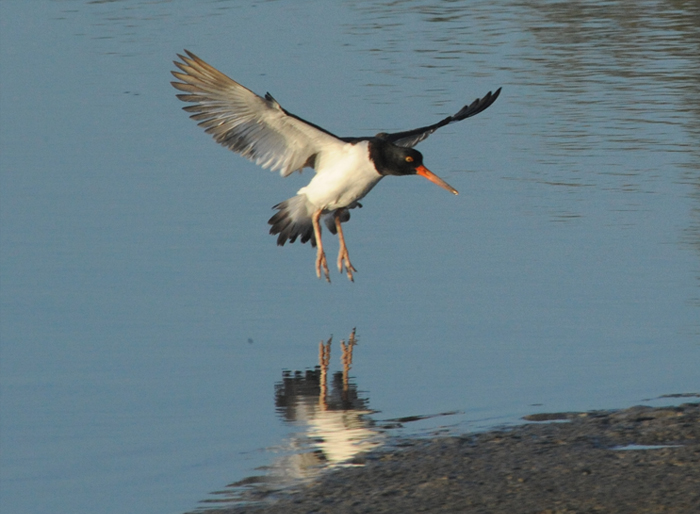 |
 | It was interesting to observe the ecosystem. Beyond the sand are established mangroves, and in the sand close to the water are sprouting mangroves which act to develop more land. In the water are the shell mounds. |
Oystercatcher landing sequence. Below is after the landing, looking like there was nothing to it. 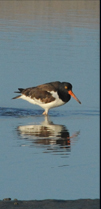 | 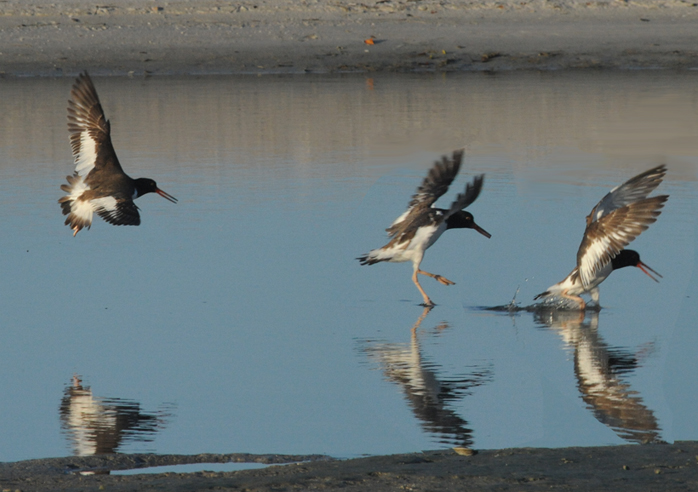 |
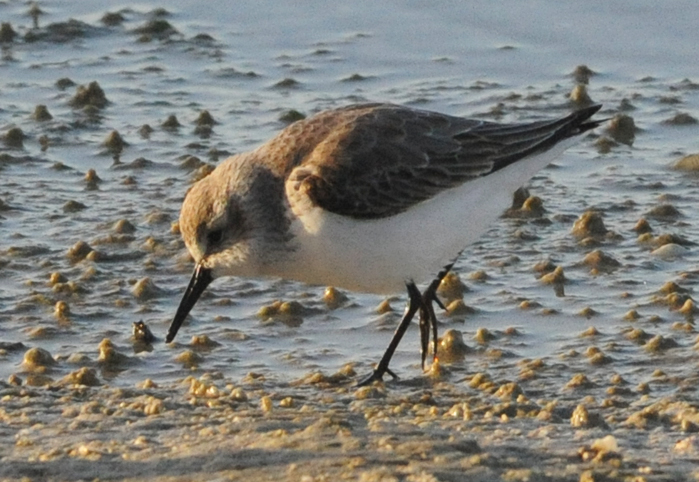 | The sandpipers were almost always present. It was very pleasant to watch their activity along the water's edge. |
This snowy egret comes in for a graceful landing. 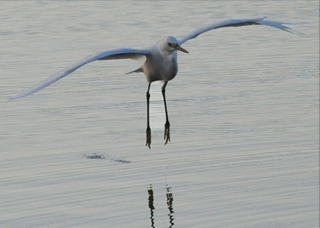 It lands right next to an ibis, and they appear to be having a conversation. I have trouble distinguishing the small white heron and the snowy egret, but the flaring feathers seem more characteristic of the egret. | 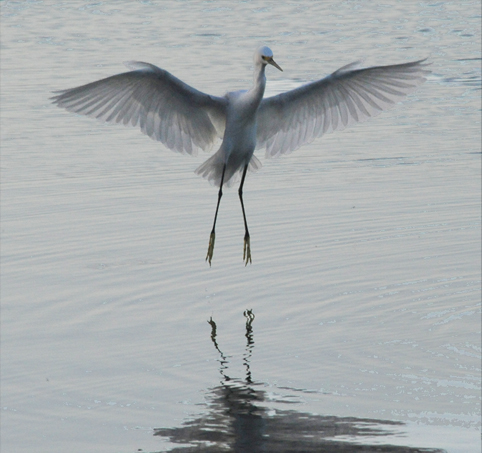 |
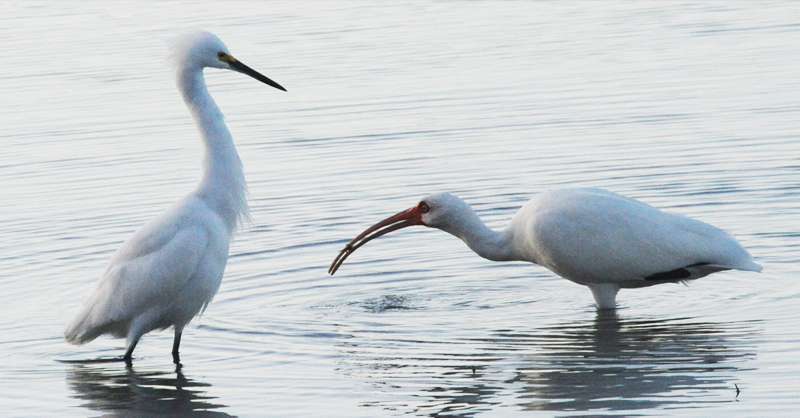
 | These birds were always a pleasure to watch. They were so calm and serene that it rubbed off on you. |


 | The ibis put on quite a show at the water's edge. They shuffled their feet in the shallows and probed the bottom with their long beaks. They did not seem in the least bothered by our presence. |
This sandpiper moves slowly along the muddy edge of the tidal stream. There is a mangrove shoot in the water behind him. | 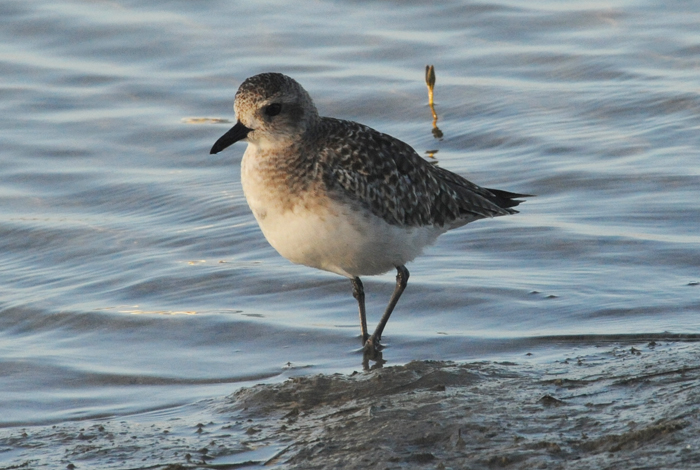 |
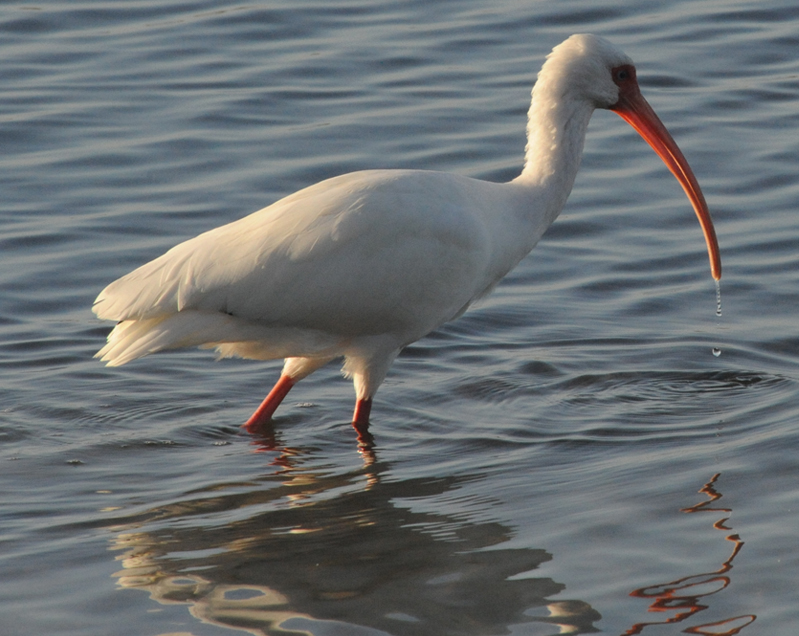
It was 8:30 am and the morning light was wonderful for showing off these birds. This photo of a wading ibis caught more than I saw with my eye, an advantage of shooting at 1/1000 second to catch the droplets from his beak.
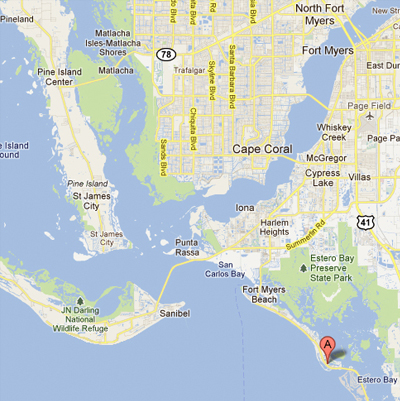 |  |
| Sand Sculptures |
| Monday at Ft. Myers Beach |
2011